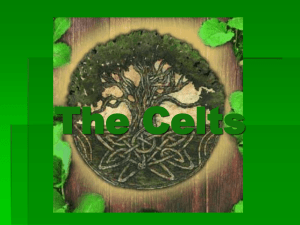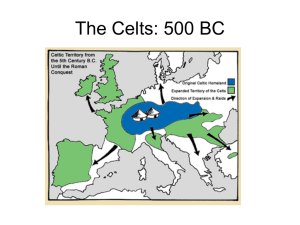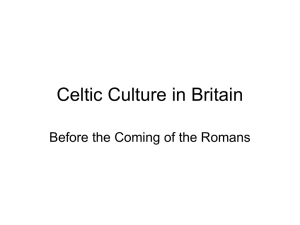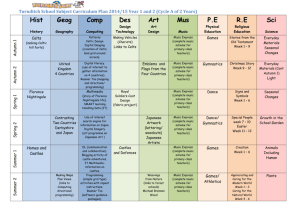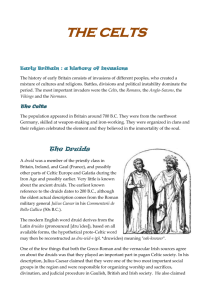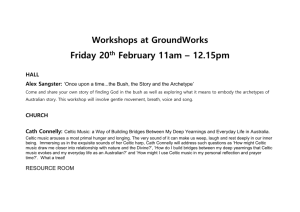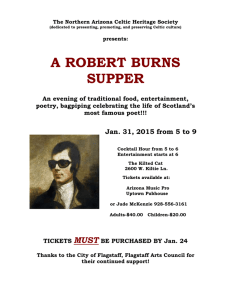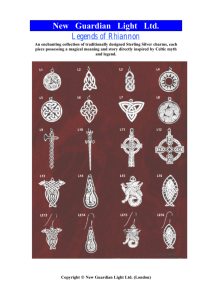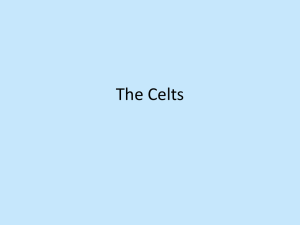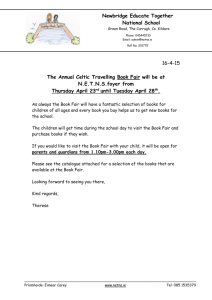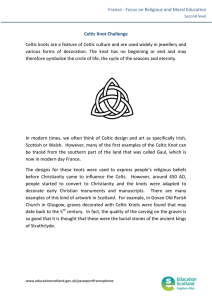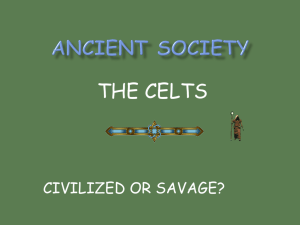The Celts
advertisement
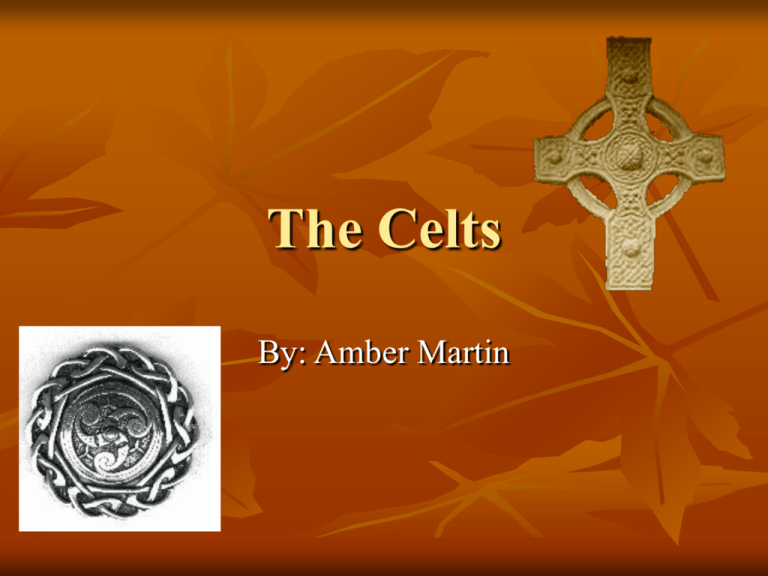
The Celts By: Amber Martin Describing Celts Emotional, passionate, heroic, wild, and drunken Sensual, artistic, hospitable, instinctual Proud, inventive, battle-loving They were farmers and traders and also did some Agriculture They traded metals, salt, Pottery, glass and coin ornaments Family The family was known as a clann Extended family of generations Group members were responsible for everyone in the clann They lived in huts that were made from arched timber with walls made of wicker and thatched roofs Education “Beul aithris” (oral tradition) was passed down by grandparents, aunts, uncles, parents, foster parents Children would be raised by another family “foster parents” to get educated in a certain trade Foster parents were usually the brother of the birth-mother Hospitality When the clann had guests, they would have to do the best they could Guests would make an offering Guests would be expected to sing, play a tune, or tell a tale Homosexuality Homosexuality was common It is not looked at specifically as bad behavior It is acceptable if the terms in the marriage contract says so Marriage and Women The oaths are the only religious part of marriage which are specified by the marriage contract Women were equal to men They could own property, choose own husbands, and be war leaders They also had an equal part in putting together the marriage contract Religion Believe in the “otherworld” A metaphor is the image of the dangerous journey on the sea Their lives were a dangerous journey toward death The circle on the cross is the halo of the Christ figure They built monastic communities in a circular design Religion continued The communities were intended to be lived in communion with the earth, the sea and the Creator “For the Celtic saints, the earth is the Lord’s and the fullness thereof, first and foremost, not something to be owned or dominated by anyone” Celtic Sacrifice They believed in life after death “otherworld” To be killed or to kill was not thought of as a negative act It would give honor to the victim If crops were failing or animals were falling to disease they would offer human blood to insure health of the population Human sacrifices were made to insure a successful battle They would be buried with jewelry to take to the otherworld Sacrifice In battle they would cut peoples heads off and carry it around. They were trophies to them, which symbolized courage and valour “The sacrificed individual would be stabbed in the back or the breast, and then studied, as the moment of death was the point in which the earthly world of the profane meets the sacred otherworld. The message would then be returned to the examiners in the ways in which the dying would pass on.” Druids Druids “very knowledgeable one” were important to the celtic culture They could stop a battle Responsibilities included: teaching the religious doctrine, medicine, civil justice, sacrifice, divination, and care of temples To become a druid, school would take up to 20 years because it all had to be memorized They performed animal and human sacrifices and practiced divination and other forms of magic Nobility “The King or Queen was the central part of the social structure.” “They were responsible for harmony between the tribe and the land, and also for the prosperity of the tribe.” Collectivist culture Power distance –high Feminine culture “care for their clann” Uncertainty avoidance – low (women have their choice of husband) References McCarthy, J., & Hague, E. (2004). Race, nation, and nature: The cultural politics of “Celtic” identification in the american west. Annals of the Association of American Geographers, 94(2), 387-408. Santmire, P. (2000). Celtic saints and the ecology of death. A Journal of Theology, 41(4), 302-309. Gaelic Celtic Culture. 10-5-05. http://homepage.tinet.ie/~kthomas/gaelic/gaelic1.htm Celtic Britain. The Iron age. 600 bc – 50 ad. 10-5-05. http://www.britainexpress.com/History/Celtic_Britain.htm Mckinnon, S. Celtic Sacrifice. 10-5-05. http://gallery.sjsu.edu/sacrifice/celt.html Druids. 10-16-05. http://yahooligans.yahoo.com/reference/encyclopedia/entry/druids Powell, T. G. E.(1983). The Celts. New York: Thames & Hudson. Green, M. J. (1995). The Celtic World. New York: Routledge.
